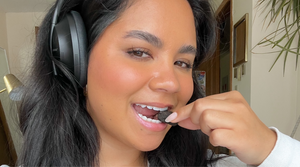WHY IRON?
Iron is an essential nutrient for all living organisms. It contributes to a wide range of metabolic processes. These include oxygen transport, DNA synthesis, and electron transport*.
Iron deficiency anemia is the most common nutritional deficiency worldwide. According to the World Health Organization, over 30% of the world’s population (around 2 billion people) are anemic due to iron deficiency (1). There is some evidence that iron deficiency without anemia affects cognition in adolescent girls. It also causes fatigue in adult women (2). Even mild or moderate forms of iron deficiency can be associated with functional impairments affecting cognitive development, immunity mechanisms and work capacity.
40% of vegans ages 19 to 50 were iron deficient according to a report from American Family Physician. This means that individuals following a vegan or vegetarian diet should be more attentive to maintaining a nutritional balance that provides adequate iron (2).
*this is necessary to produce ATP, the body’s primary source of organic energy
- World Health Organization. Worldwide Prevalence of Anaemia 1993–2005: WHO Global Database on Anaemia. World Health Organization, 2008.
- SHERSTEN KILLIP, M.D., M.P.H., JOHN M. BENNETT, M.D., M.P.H., and MARA D. CHAMBERS, M.D., University of Kentucky, Lexington, Kentucky. Am Fam Physician. 2007 Mar 1;75(5):671-678.
WHAT ARE THE BENEFITS OF IRON?
Fitness:
A study was conducted to determine the effect of iron supplementation on exercise performance. The target sample were women of reproductive age.* The study found that daily supplementation with oral iron has great benefits. Iron supplementation improved both maximal** and submaximal*** exercise performance and strength. The results were compared to a control group (3). This evidence supports that prevention and treatment of iron deficiency could benefit female athletes. Iron supplementation could improve performance in athletes who compete in a wide range of sports requiring endurance, maximal power output, and strength.
*women of reproductive are at a high risk of iron deficiency due to menstrual blood loss and general reproductive development
**maximal performance measured using VO2 max (measured in millimeters of oxygen used in one minute per kg of body weight)
***submaximal performance improved by reducing the required percentage of VO2 max and heart rate
- Pasricha SR, Low M, Thompson J, Farrell A, De-Regil LM. Iron supplementation benefits physical performance in women of reproductive age: a systematic review and meta-analysis. J Nutr. 2014;144(6):906‐914. doi:10.3945/jn.113.189589
WOMEN’S HEALTH:
Menstruation increases the average daily iron loss since blood contains about 70% of the body’s iron. This means that women are commonly more susceptible to being iron deficient. Also, they must be additionally conscious to ensure that their nutritional levels are maintained. An average 132-lb woman might lose an extra 10mg of iron per menstrual cycle. The loss could be more than 42mg per cycle depending on how heavily she menstruates (4). Women who use an intrauterine device (IUD) as a method of birth control are also at a higher risk of iron deficiency. Postmenopausal women are at a low risk of iron deficiency. However it is still necessary to establish a well-rounded nutritional diet that permits for proper balance. GEM contains 10% DV of Iron to help fill in the gaps in the standard diet.
- SHERSTEN KILLIP, M.D., M.P.H., JOHN M. BENNETT, M.D., M.P.H., and MARA D. CHAMBERS, M.D., University of Kentucky, Lexington, Kentucky. Am Fam Physician. 2007 Mar 1;75(5):671-678.
HOW LONG DOES IT TAKE TO GET IRON LEVELS UP?
Usually an Iron deficient person will start to feel the effects of increased iron in about a week, but in some cases it can take 2-3 weeks.
CAN IRON DEFICIENCY CAUSE WEIGHT GAIN?
Iron is necessary for proper thyroid functioning. Iron deficiency can cause sudden weight gain due to an underactive thyroid gland. This can be compounded by the fact that low Iron also contributes to low energy levels. The good news is that bringing your iron levels up can increase your metabolism and reverse the trend (5).
- Aktas G, Alcelik A, Yalcin A, et al. Treatment of iron deficiency anemia induces weight loss and improves metabolic parameters. Clin Ter. 2014;165(2):e87‐e89. doi:10.7471/CT.2014.1688
OUR SOURCE
Dietary iron can be found in two forms: heme iron, which is found in meat and non-heme iron, which is found in plant and dairy foods. Absorption of heme iron (meat source) is minimally affected by dietary factors, whereas non-heme iron makes up the bulk of consumed iron. Therefore, plant-sourced iron contributes more to iron nutrition than heme-iron.
GEM sources our iron from curry leaves, namely Murrya koenigii. Curry leaves contain proteins, carbohydrate, fiber, minerals, carotene, nicotinic acid, Vitamin C, Vitamin A, calcium and oxalic acid. These are all co-nutrients that facilitate the absorption of dietary iron. Our curry leaves (Murraya Koenigii) are sourced from India, Certified Organic and Non-GMO.






